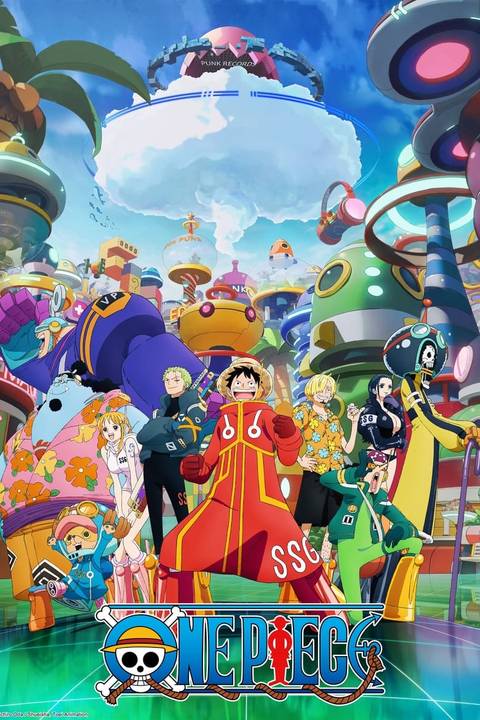One Piece has successfully cultivated a massive worldwide following to the point of influencing everything from new series, to entire counter-cultural movements. But one of its biggest points of contention is how the anime has handled filler, its pacing, and which filler actually stays skippable. Its rivals like Naruto: Shippuden, love or hate its filler, don’t have the same problem.
While it’d be hasty to trade One Piece’s situation with the infamously frustrating Naruto filler approach, jamming in worthless interludes like a Mecha Luffy arc, it’s worth appraising both series for what they do well in addition to what they do wrong. Naruto: Shippuden was a product of Pierrot’s old era, and its bulky filler was a reasonable pacing solution.
One Piece’s Problem Blurs Lines of Filler and Pacing Issues
Since its 1999 debut, One Piece has been running in tandem with its source material, but its pacing problems would surprisingly grow worse over time. Due to the persistent need to draw viewers to its timeslot on Fuji Television, filler would allow the manga space to stay ahead while entertaining audiences. However, eventually, One Piece took a different approach.
This may come as a shock to anybody who strictly observes One Piece’s inoffensive ~9-11% filler content compared to Naruto: Shippuden’s egregious 41%. One could even hand-wave either issue as a matter of consulting something like a Naruto filler list. But the fact of the matter is, while Naruto’s filler was massive, one could reasonably skip it without missing much.
One Piece’s filler, in some instances like the Warship Island Arc, or in “canon filler” instances like Long Ring Long Land, introduce anime additions to Oda’s vision, becoming canonical with the manga. Others, like G-8, remain simply filler but are immensely enjoyable nonetheless.
But one may notice that, beyond the period of Enies Lobby and entering the Dressrosa era, filler suddenly grows far less saturated. Dressrosa’s 102 chapters in the One Piece manga, were stretched to 118 anime episodes, with it being the most commonly-cited example of One Piece’s lowest point in terms of pacing. Dressrosa, crucially, had no explicitly filler episodes.
Here lies the problem of the nature of One Piece’s filler content versus its contemporaries. While it tried to take a different approach, this slower pacing was not sustainable for audience retention, even if its even slower delivery in Wano was rewarding due to the phenomenal animation and story. Its flashbacks, running shots, were a poor substitute for actual filler.
One Piece Is Creating the Solution Naruto Never Had
While Naruto and Naruto: Shippuden received a sequel equally inundated with filler in Boruto: Naruto Next Generations, One Piece’s anime output recently has gradually done away with filler. While One Piece’s pacing in recent episodes is still slower than the average anime, running about a chapter per episode while modern series often run more briskly, it’s making key strides.
While One Piece’s pacing in recent episodes is still slower than the average anime, running about a chapter per episode while modern series often run more briskly, it’s making key strides.
One Piece is a verbose, dense series loaded with dialogue and lore, but it is taking a new approach to shed filler episodes, poorly-paced installments, and irritating recaps entirely. With the Elbaph Arc, the anime will finally adopt its take on a seasonal model, releasing 26 episodes a year. This is the solution Naruto fans hope Boruto’s return will take.
For some, this will be the end of an era. Persistent releases of One Piece episodes alongside new chapters are part of the fandom’s weekend ritual, but this will almost certainly mean greater episode-to-chapter ratios in quality installments, shoring up the pacing problems. But it may mean the only truly filler content left will be future One Piece movies.

- Release Date
-
October 20, 1999
- Network
-
Fuji TV
- Directors
-
Hiroaki Miyamoto, Konosuke Uda, Junji Shimizu, Satoshi Itō, Munehisa Sakai, Katsumi Tokoro, Yutaka Nakajima, Yoshihiro Ueda, Kenichi Takeshita, Yoko Ikeda, Ryota Nakamura, Hiroyuki Kakudou, Takahiro Imamura, Toshihiro Maeya, Yûji Endô, Nozomu Shishido, Hidehiko Kadota, Sumio Watanabe, Harume Kosaka, Yasuhiro Tanabe, Yukihiko Nakao, Keisuke Onishi, Junichi Fujise, Hiroyuki Satou
-

Mayumi Tanaka
Monkey D. Luffy (voice)
-

Kazuya Nakai
Roronoa Zoro (voice)
This story originally appeared on Screenrant


